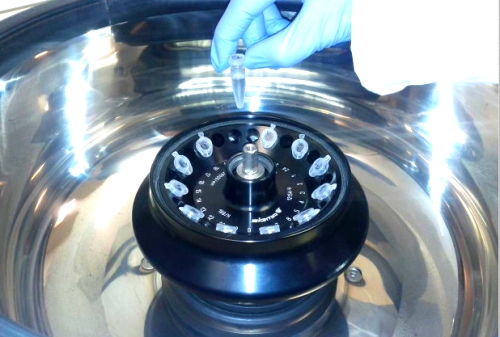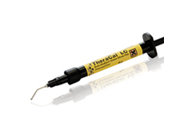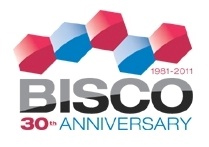J Dent Res 86(Spec Iss A): Abstr. 1381, 2007
In-Vitro Shear Bond and Retention tests: Self Adhesive Resin Cements
F. SUCCARIA, E. AL-BADAWI, and D. NATHANSON, .
Abstract:
Objectives: The objective of this study was to evaluate new self adhesive resin cements for 1) shear bond strength to dentin and 2) retention of metallic crowns. Methods: The occlusal surfaces of 25 human molars embedded in acrylic bases were sectioned and the exposed dentin surfaces were polished with diamond grit (70, 45, 15 microns successively). Pressed ceramic rods (Empress Esthetic – Ivoclar-Vivadent) 2.5 mm in diameter were etched at the base and attached with self-adhesive cements to the dentin surfaces as follows: Group 1: RelyX Unicem (3M ESPE); Group 2: BisCem (Bisco); Group 3: Experimental resin cement (GC); Group 4: MonoCem (Shofu); Group 5: Multilink (Ivoclar-Vivadent); and Group 6: Embrace (Pulpdent). All cements were applied according to the manufacturers' recommendations. Shear bond strength was tested after 24 hours storage in water using a flat blade at 0.5 mm/min (Instron). Retention was tested by cementing stainless steel cylinders (6.2 mm diameter) using the 6 cements into corresponding milled metal retainers designed with 50 Micron cement space. (n= 6 /group). Cemented cylinders were pushed out in compression (Instron) and stress at cement failure was calculated. ANOVA and Tukey multiple comparison tests were used for analysis (P<.05).
Results: Mean shear bond strengths (MPa) and SDs as well as retention stresses and SDs are shown:

The results showed that Multilink (Ivoclar-Vivadent) produced significantly higher shear bond strength values than other tested self adhesive resin cements. There was no significant difference among all other materials. Biscem (Bisco) produced significantly higher retention values than other tested self adhesive resin cements. There was no significant difference among all other materials.
Conclusion: Tested self-adhesive resin cements exhibited relatively low bonds to dentin except for Multilink (with priming). Retention values ranging from 40.8 to 54.46 MPa were not significantly different except for BisCem at 78 MPa.
J Adhes Dent. 2010 Feb 12.
Microtensile Bond Strength of Glass Fiber Posts Cemented with Self-adhesive and Self-etching Resin Cements.
Zaitter S, Sousa-Neto MD, Roperto RC, Silva-Sousa YT, El-Mowafy O.
Abstract:
Purpose: To evaluate the bond strength of glass fiber posts to intraradicular dentin when cemented with self-etching and self-adhesive resin cements. Materials and Methods: Forty-eight single-rooted human teeth were decoronated, endodontically treated, post-space prepared and divided into 8 groups (n = 6). The glass fiber posts used were: Exacto (EA) (Angelus) and everStick (ES) (StichTeck), which were cemented with two self-adhesive resin cements: BisCem (BIS) (Bisco) and Rely-X Unicem (UNI) (3M/ESPE), and two self-etching resin cements: Esthetic Cementing System NAC100 (NAC) (Kuraray) and Panavia-F (PAN) (Kuraray). Specimens were thermocycled between 5 degrees C and 55 degrees C for 1000 cycles and stored in water at 37 degrees C for 1 month. Four 1-mm-thick (in cross section) rods were obtained from the cervical region of the roots. Specimens were then subjected to microtensile testing in a special machine (BISCO; Schaumburg, IL, USA) or a crosshead speed of 0.5 mm/min. Microtensile bond strength (muTBS) data were analyzed with two-way ANOVA and Tukey's tests. Results: Means (and SD) of muTBS (MPa) were: EA/PAN: 10.3 (4.1), EA/NAC: 14 (5.1) EA/BIS: 16.4 (4.8), EA/UNI: 19.8 (5.1), ES/PAN: 25.9 (6.1), ES/NAC: 29.1 (7), ES/BIS: 28.9 (6), ES/UNI: 30.5 (6.6). ANOVA indicated significant differences among the groups (p < 0.001). Mean muTBS values obtained with ES post were significantly higher than those obtained with EA (p < 0.001). For EA, Tukey's test indicated that higher muTBS means were obtained with the self-adhesive resin cements (BIS and UNI), which were statistically significantly different (p < 0.05) from values obtained with the self-etching resin cements (PAN and NAC). Different cements had no significant effects on the bond strength values of ES post (p > 0.05). muTBS values obtained with ES post were significantly higher than those obtained with EA post irrespective of the resin cement used. Conclusion: everStick posts resulted in the highest mean muTBS values with all cements. Self-adhesive cements performed well in terms of bond strength.
Summary:
Higher muTBS means were obtained with the self-adhesive resin cements Biscem and Unicem, which were statistically significantly different (p < 0.05) from values obtained with the self-etching resin cements Panavia and NAC100.
Int Endod J. 2010 Apr;43(4):259-68.
Effect of adhesive system type and root region on the push-out bond strength of glass-fibre posts to radicular dentine.
Onay EO, Korkmaz Y, Kiremitci A., Department of Endodontics, Faculty of Dentistry, Baskent University, Ankara, Turkey. Esta dirección de correo electrónico está siendo protegida contra los robots de spam. Necesita tener JavaScript habilitado para poder verlo.
Abstract:
AIM: To compare interfacial strength in different thirds of the root canal amongst glass-fibre posts luted with four different adhesive luting agents.
METHODOLOGY: A total of 44 extracted human single-rooted teeth were randomly divided in four groups and restored using glass-fibre posts and the following luting agents: All Bond SE/Duo-Link (ABSE), All Bond 3/Duo-Link (AB3), BisCem (BC), Clearfil ED primer II/Clearfil Esthetic Cement (CLF). One week after luting, the samples were thermocycled in water, and then embedded in acrylic resin. Three sections (cervical, middle and apical) of 2 mm thickness were prepared from each specimen, and the post in each section was subjected to a push-out test. One additional specimen for each group was prepared for scanning electron microscopy analysis and the bonding effectiveness to dentine was assessed. The data were analysed using the Kolmogorov-Smirnov test, two-way anova, one-way anova, and the Scheffe test (P < 0.05).
RESULTS: The push-out bond strength values for BC and ABSE were not significantly different (P > 0.05), but both were significantly higher than the means for AB3 and CLF (P < 0.05) in the cervical and middle regions. The same trend was observed in the apical region, except for the AB3 and ABSE which were not significantly different (P > 0.05) from each other. There were significant differences in bond strength amongst root thirds, with a reduction in values from the cervical to apical third (P < 0.05).
CONCLUSIONS: The use of BisCem and All Bond SE/Duo-Link combination with their simplified application procedures may be considered an alternative to the currently used systems for luting glass-fibre posts in root canal.
Summary:
"The current experiment indicates that BisCem revealed higher bond strength values compared with all other materials tested, even after thermocycling. Although self-adhesive cements were unable to demineralize/dissolve the smear layer completely and no evidence of a hybrid layer and resin tags were observed, good adaptation and continuity with root dentine was reported (Goracci et al. 2005, Monticelli et al. 2008). This finding is in agreement with the results of the present study as shown by SEM examination."
The author speculates that the lower bonding performance of All Bond 3 and Duo-Link combination may be attributed to the high initial ethanol content (90%) of All Bond 3 adhesive system (Material Safety Data Sheet: All Bond 3, 2008; Bisco, Inc, Schaumburg, IL, USA). Additionally, the etch and rinse technique can be sensitive and the whole concept of wet bonding is subjective regarding preferred levels of moisture and how to achieve those levels (Van Meerbeek et al. 2005, Pashley et al. 2007, Wang et al. 2007).
If total-etch adhesives are used for this application, care must be taken to fully rinse the etchant and remove the adhesive solvent prior to cementation.
Biscem demonstrates consistent, high bond strengths for post cementation. Using Biscem for post cementation has the potential to minimize user error.

Additional References:
“No evaluators reported any post-cementation sensitivity or dislodgements. Not runny. Highest bond strength on enamel at 24 hours.”
-REALITY Publishing Company
“The uniformity of the mix is excellent and the viscosity allows passive seating of the restoration. The cement stacks well and maintains its placement. The opaque shade is very dense and the translucent shade very clear.”
- THE DENTAL ADVISOR
“(BisCem) exhibited similar bond strength values compared with conventional resin
cement (Panavia F).”
-R.C. ROPERTO1, O. EL-MOWAFY1, and S.T. PORTO-NETO2, Surface Conditioning Improving the Adhesion between Posts and Resin Cements. J Dent Res 87(Spec Iss B):Abstr.0371, 2008





